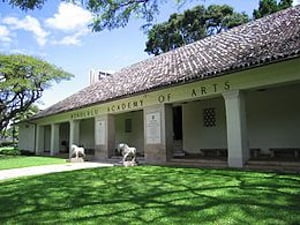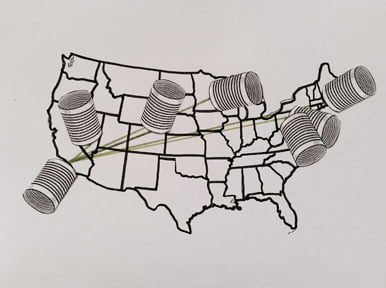Honolulu Museum of Art presents Moods and Dreams in 19th-Century Graphic Arts, an exhibition on view November 29, 2012 – February 10, 2013.
 The 19th century saw profound changes in European art and culture. Political, religious, scientific, and artistic authority all came into question, and many artists responded by laying claim to the creative process. The graphic arts in particular became fertile ground for innovation, diverging from their traditional illustrative function to tap into what lay beyond artistic convention and rational thought. This exhibition examines the darker side of 19th-century graphic art to show how received mythologies, arcane visual codes, psychological states, and avant-garde aesthetic principles formed the basis for radically introspective alternatives to Realism and Impressionism.
The 19th century saw profound changes in European art and culture. Political, religious, scientific, and artistic authority all came into question, and many artists responded by laying claim to the creative process. The graphic arts in particular became fertile ground for innovation, diverging from their traditional illustrative function to tap into what lay beyond artistic convention and rational thought. This exhibition examines the darker side of 19th-century graphic art to show how received mythologies, arcane visual codes, psychological states, and avant-garde aesthetic principles formed the basis for radically introspective alternatives to Realism and Impressionism.
The exhibition begins with the work of the Romantic artists William Blake and Francisco Goya, both of whom sought to destabilize established imperatives by reinterpreting traditional folklore, biblical themes, and, in the case of Goya, ruling-class foibles in terms of the tension they perceived between rationalism and superstition, truth and religion, society and the individual. Later in the century, the master printers Charles Meryon and Félix Bracquemond created exquisitely crafted etchings characterized by technical precision and eerily obtuse iconography, while the Aesthetics James McNeill Whistler and Edward Burne-Jones conceptualized the printmaker’s craft as a retreat into the realm of art.
The exhibition continues with the work of a new generation of artists who, active in the century’s turbulent last two decades and influenced by Romanticism and Aestheticism, placed further emphasis on the imagination. Jacques Villon and Félicien Rops captured the sensory overload of the fin-de-siècle interior and drew visual metaphors between its private spaces and the inner realm of the psyche. Meanwhile, James Ensor, Edvard Munch, and Odilon Redon shifted their focus from what the eye sees to what the mind both reveals and perceives. In emphasizing the spirit, these artists sought to suggest that objects in the world are but symbols for ideas, conjured and communicated through the artist’s touch.
The Honolulu Museum of Art
900 South Beretania Street
Honolulu, Hawaii 96814
808-532-8700
www.honolulumuseum.org



